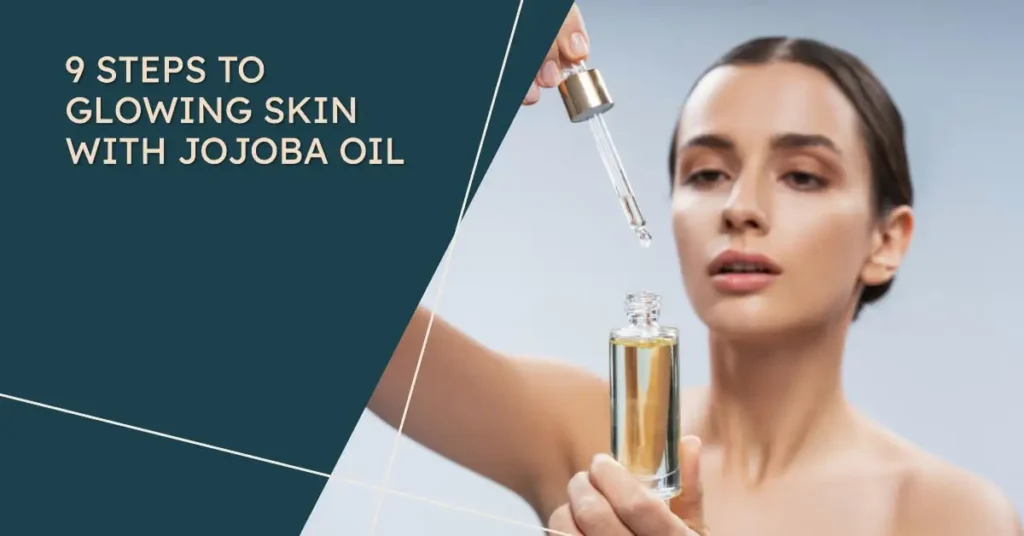Get Rid of Strawberry Legs: Best 10 Tips for Smoother Skin
Are you struggling to get rid of strawberry legs? Those annoying red bumps on your legs can be frustrating and embarrassing. Luckily, there are ways to smooth your skin and banish strawberry legs for good.
Keep reading to learn what causes strawberry legs and discover 10 tips dermatologists recommend for getting rid of them. With some consistency, you can reveal smooth, sexy legs just in time for summer!
What Causes Strawberry Legs?
Strawberry legs refer to the presence of dark red or brown dots that resemble strawberry seeds on your legs. There are a few potential causes behind this common condition:
- Clogged Pores: One of the main reasons you can develop strawberry legs is clogged pores or hair follicles on your legs. When dead skin cells, oil, and sweat build up, they can block the openings of the hair follicles and form bumps. Shaving and waxing also cause the hair to retreat back into the follicle, trapping the debris inside.
- Keratosis Pilaris: Many cases of strawberry legs are caused by a harmless skin condition called keratosis pilaris. This occurs when keratin, a protein in the skin, builds up and plugs the hair follicles. Keratosis pilaris results in tiny bumps usually found on the upper arms, thighs, or buttocks.
- Shaving Irritation: For many people, strawberry legs are the result of shaving mistakes. Dragging a dull razor across your skin can lead to irritation, ingrown hairs, and bumps. Frequent shaving causes more dead skin cell buildup, which also contributes to clogged pores.
- Genetic Causes: While genetics are not necessarily the direct cause of strawberry legs, they can influence certain risk factors. People with a family history of keratosis pilaris are more prone to developing it. You may also be genetically predisposed to dry skin, large pores, excessive body hair, or other conditions related to clogged follicles and strawberry legs. While you can’t change your genetics, you can minimize risk by caring for your skin properly.
Now that you know what causes strawberry legs, let’s get into the treatments and home remedies that can help get rid of them fast.
Get Rid of Strawberry Legs: 10 Tips for Smoother Skin

Follow these dermatologist-recommended tips to finally achieve smooth legs:
1. Exfoliate Regularly
Gently sloughing off dead skin cells through exfoliation is key to unclogging pores and hair follicles. Use an exfoliating scrub or dry brush 2 to 3 times per week to reveal fresh skin. Just don’t overdo it ,which can lead to irritation.
When exfoliating, massage your legs in upward circular motions to boost circulation. Rinse with cool water and be sure to moisturize after. Aim to exfoliate more often if you are prone to ingrown hairs and clogged pores.
2. Use a Chemical Exfoliant
For deeper exfoliation, use chemical exfoliants that contain acids to dissolve dead skin cells. Chemical exfoliants should be used 1 to 2 times per week, especially on sensitive areas like your legs.
Look for products containing glycolic acid or lactic acid, like body lotions or peels. Start with lower concentrations and monitor your skin’s tolerance. Avoid using harsh scrubs or brushes when using chemical exfoliants.
3. Moisturize Daily
It’s imperative to keep your legs hydrated if you want smooth skin. Apply an unscented moisturizer after showering and exfoliating. Choose a creamy formula containing ceramides or hyaluronic acid.
If you have keratosis pilaris, urea-containing lotions can help soften and exfoliate rough bumps. Moisturizing daily is key to preventing dry, irritated skin, leading to clogged follicles.
4. Remove Hair Properly
How you remove leg hair can influence the development of strawberry legs. Shaving with a dull razor or going too many days between shaves can increase irritation. Consider getting waxed or trying other hair removal methods.
No matter the method, be sure to exfoliate properly 2 to 3 times a week for clearer pores. Always moisturize after hair removal to avoid dryness. Ingrown hairs can be minimized by using Tend skin or a chemical exfoliant.
5. Try Laser Hair Removal
Since ingrown hairs are a common cause of strawberry legs, laser hair removal is an effective long-term solution. Laser hair removal targets the hair follicle to permanently prevent regrowth.
Most people need about 6 sessions spaced several weeks apart to see results. The technology works best for those with dark, coarse hair. Electrolysis is an alternative permanent hair removal option.
6. Use Creams Containing Urea
Dermatologists highly recommend urea for treating rough, bumpy skin caused by keratosis pilaris. Urea is a humectant that softens and exfoliates. Creams with concentrations of 10% or more are ideal for smooth skin.
Apply a urea cream 1 to 2 times per day on your legs. Consistent use for several weeks can lead to noticeable improvements. Urea-containing products are available as lotions, creams, gels, and more.
7. Take an Oral Supplement
Supplements taken orally may also help get rid of strawberry legs. Some options include vitamin A for exfoliation, vitamin C for collagen production, and fish oil for reducing inflammation.
Supplements work systemically over time, so try taking them daily for a minimum of 2 to 3 months. Always follow dosage instructions carefully and consult your doctor first.
8. Wear Sunscreen
Protecting your legs from sun exposure can prevent scarring and hyperpigmentation that exacerbate the appearance of strawberry legs. Apply broad-spectrum SPF 30 or higher to your legs before going outside.
Reapply sunscreen every 2 hours if sweating or swimming. Wear protective clothing and avoid the sun between 10 am and 2 pm when UV exposure is strongest. Keeping your legs safe from sun damage will help the other treatments be more effective.
9. Improve Your Diet
Your diet affects the health of your skin. Eat a balanced diet rich in vitamins, minerals, and antioxidants from whole foods. Stay hydrated by drinking enough water daily. Avoid inflammatory foods like sugar and processed carbs.
Healthy fats from salmon, nuts, and seeds are great for nourishing the skin. Berries, leafy greens, and yogurt provide nutrients that may improve keratosis pilaris and clogged pores. A cleaner diet supports skin renewal and function.
10. Consider Professional Treatments
For severe or stubborn strawberry legs, you may benefit from professional treatments from a dermatologist. They can perform deeper chemical peels at the office to clear clogged pores and exfoliate.
Microdermabrasion and specialized laser treatments can also help resurface the skin and minimize ingrown hairs. Often, only a few sessions are needed for significant improvements in the texture and appearance of the skin.
How Fast Can Strawberry Legs Go Away?
Most at-home treatments require consistency and patience to see results. Keep using the remedies daily for a minimum of 4 to 6 weeks before expecting changes. The more diligent your routine, the faster you’ll see a difference.
In-office procedures like chemical peels provide faster improvements but still require multiple sessions. No matter the treatment, avoid becoming discouraged if strawberry legs don’t disappear immediately. With time and proper care, your legs will look and feel smoother.
Creams for Strawberry Legs

Using medicated creams and lotions can bring relief to this stubborn skin condition. Some topical ingredients to look for include:
- Urea: Dermatologists highly recommend urea, a humectant that softens and exfoliates rough skin. The higher the urea concentration, the more effective it will be at breaking down thick, bumpy skin.
- Salicylic Acid: This beta-hydroxy acid gets deep into pores to dissolve dead skin cells and oil. It’s commonly found in acne products but works well for clearing clogged hair follicles. Start with a lower percentage.
- Glycolic Acid: Glycolic acid is an alpha-hydroxy acid that works as a chemical exfoliant. It sloughs off the top layer of skin to reveal smoother skin. Like salicylic acid, it can penetrate and unplug pores.
Home Remedies for Strawberry Legs
Natural ingredients you may already have at home can also be used to get rid of strawberry legs. Some easy home remedies to try include:
Sugar Scrubs
Using a sugar scrub is a simple way to exfoliate your skin at home. Exfoliation means removing dead skin cells. This process helps to remove the dead skin and impurities that clog your pores, which reduces the look of strawberry skin.
How to use:
- You can create a scrub by mixing sugar (brown or granulated) with a carrier oil, such as coconut oil, olive oil, or almond oil.
- Mix these until you form a thick paste.
- Gently rub the mixture onto your legs in circles.
- Massage it onto damp skin for a few minutes.
- Rinse it off completely with warm water.
- Experts suggest using a scrub about one to two times each week.
Coconut Oil
Coconut oil is an ingredient that helps deeply moisturize your skin. Dry skin can make the appearance of dark pores and bumps more noticeable. Coconut oil can reduce inflammation and keep the skin hydrated.
How to use:
- Apply a small amount of coconut oil to your legs after you shower to moisturize deeply.
- You can also mix coconut oil with other ingredients like sugar or salt to create an exfoliating scrub.
- If your skin is irritated or dry, you can soak in a bath with a spoonful or two of coconut oil added to the warm water, as this helps the oil get into the skin and repair the skin barrier.
Apple Cider Vinegar
Apple cider vinegar can act like a toner and help improve your skin’s health. It works by balancing the skin’s pH and acting as a natural exfoliant. This helps to gently cleanse and clear clogged pores.
How to use:
- You must dilute ACV before putting it on your skin. A good mix is one part ACV to two parts water.
- Apply the diluted mixture to the affected skin using a cotton pad or cotton ball.
- Let the mixture sit on your skin for about five to ten minutes before washing it off.
- Always do a patch test first to make sure it does not irritate your skin.
Salicylic Acid
Salicylic acid (SA) is a beta-beta-hydroxy acid (BHA), which is a type of chemical exfoliant. It is oil-soluble, which means it can go deep inside the pores to remove trapped oil and debris. This process helps to clear out the buildup of sebum and dead skin cells that cause the dark spots of strawberry legs.
How to use:
- You can find salicylic acid in creams, lotions, body washes, or toners that are sold without a prescription.
- Use these products a few times per week to gradually reduce the look of strawberry legs.
- If you use SA products, make sure to apply moisturizer afterward.
- Do not apply chemical exfoliants immediately after shaving, as shaving causes damage to the hair follicle, and this can cause burning.
Lactic Acid
Lactic acid is an Alpha Hydroxy Acid (AHA). AHAs are mild chemical exfoliants that are useful for smoothing the skin without irritating. Lactic acid works by gently loosening the bonds between dead skin cells, making it easier for them to shed from the skin.
How to use:
- Look for products like gentle chemical exfoliants, body scrubs, or lotions that contain AHAs like lactic acid.
- Incorporate these products into your routine for smoothing the skin and unclogging pores.
Dry Brushing
Dry brushing is a method of physical exfoliation that can help get rid of strawberry legs. Dry brushing removes dirt and dead skin cells, which helps keep pores clear and prevents buildup. It also helps increase blood circulation and prepares your skin to absorb moisturizer better.
How to use:
- Use a natural bristle body brush.
- Gently brush your dry skin in circular motions, starting before you get in the shower.
- Brush upwards from your ankles all the way up toward your heart and neck.
Shaving Cream/Gel/Conditioner
Using a moisturizing shave cream, gel, or even hair conditioner helps prevent irritation, razor burn, and dryness, all of which can lead to strawberry legs. These products create a protective ‘slip’ that lets the razor move smoothly across your skin, minimizing friction and irritation.
How to use:
- Always use a dedicated hydrating shaving cream, gel, or lotion when you shave.
- Hair conditioner is an effective and minimalist option because it provides the perfect slip and conditioning ingredients.
- Never shave your skin when it is dry, as this is a fast path to irritation.
Coffee Scrub
A coffee scrub uses the natural coarseness of coffee grounds to exfoliate your skin. Exfoliation helps remove dead skin cells and unclog pores, while scrubbing also helps improve circulation.
How to use:
- Mix ground coffee grounds with an oil, such as olive oil or jojoba oil, to make a gritty paste. You can also add cocoa powder to help fade dark spots.
- Massage this paste onto your legs in circles.
- Rinse off the scrub thoroughly with water.
- Use this scrub once to twice per week.
Baking Soda
Baking soda can be used as a gentle home remedy to exfoliate and cleanse your skin. Because it is a gentle exfoliant, it helps unclog pores and can reduce redness associated with strawberry skin. When mixed with lemon juice, it can also help lighten dark spots.
How to use:
- Mix baking soda with water to make a thick paste.
- Apply this paste to the areas where you have strawberry skin.
- Gently rub the paste on your skin for a few minutes.
- Leave it on for five to ten minutes before rinsing it off with lukewarm water.
Tea Tree Oil
Tea tree oil has strong antibacterial and anti-inflammatory properties. Applying it helps prevent itching and irritation caused by strawberry patches and can soothe angry bumps and pores. It can also help reduce the risk of folliculitis (inflamed hair follicles).
How to use:
- You must dilute tea tree oil before applying it. Mix a few drops with water or a carrier oil like coconut or jojoba oil.
- Apply this diluted solution directly to the individual bumps or patches.
- Always perform a patch test first because tea tree oil can be irritating to some skin types.
Retinol/Retinoids
Retinoids are topical treatments that can help improve the texture of your skin. They work by encouraging cell turnover, which helps reduce hyperpigmentation and clears up clogged pores that cause strawberry legs. A body retinoid oil can also seal in moisture and help smooth and renew skin overnight.
How to use:
- Retinoids come in creams, lotions, or serums.
- Apply a retinoid product after your lotion, as a final step in your routine.
- If you use prescription-strength retinoid creams, you should use them only under a doctor’s care.
Safety and Precautions

While these treatments are generally safe, be cautious of the following:
- Patch test any new creams or ingredients first to check for reactions. Discontinue use if any irritation occurs.
- Avoid excessive exfoliating, which can disturb your skin’s moisture barrier. 2 to 3 times weekly is usually sufficient.
- See your dermatologist if you don’t see improvement with over-the-counter methods. Prescription retinoids may be an option.
- Take care in the sun when using chemical exfoliants, as they can increase sensitivity to UV rays.
- Treat surrounding skin gently. Aggressive hair removal on unaffected areas can worsen strawberry legs.
Conclusion
Getting rid of strawberry legs for good requires diligence and consistency with treatments. Patience and perseverance are key, as results will not happen overnight. But with the proper skincare routine, you can minimize bumps and red spots.
Exfoliate regularly, moisturize deeply, remove hair properly, and use medicated creams containing urea or acids. Lifestyle tweaks like taking supplements, drinking enough water, and protecting your skin from the sun also help.
While genetics can play a role in developing strawberry legs, they don’t have to be an inevitable annoyance. With this complete guide, you can have super smooth, sexy legs just in time for shorts and swimsuit season.
Source:
Noble Home Remedies adheres to rigorous sourcing standards, drawing information from peer-reviewed studies, reputable academic research institutions, and esteemed medical journals and associations. We prioritize using high-quality, trustworthy sources to maintain the accuracy and integrity of our content. You can learn more about how we ensure our content is accurate and current by reading our editorial policy.
- Strawberry Legs: What are They and How to Prevent them?
https://gillettevenus.co.uk/en-gb/womens-shaving-guide/sensitive-skin/strawberry-legs/ - How To Get Rid Of Strawberry Legs
https://www.healthline.com/health/strawberry-legs - 5 Ways To Get Rid of Strawberry Legs
https://health.clevelandclinic.org/strawberry-legs/ - Keratosis pilaris vs strawberry legs which do I have?
https://bellavanabeautyllc.com/blogs/beyond-beauty-blog/keratosis-pilaris-vs-strawberry-legs-which-do-i-have - What are the Best Exfoliators for Strawberry Legs?
https://usa.renskincare.com/blogs/clean-thoughts/what-are-the-best-exfoliators-for-strawberry-legs - 4 Effective Ways to Get Rid of Strawberry Legs
https://in.braun.com/en-in/female-hair-removal/all-about-beautiful-skin/ways-to-get-rid-of-strawberry-legs - Strawberry legs: what are they and how do you get rid of them?
https://www.marieclaire.co.uk/beauty/skincare/strawberry-legs-789679 - What to do about strawberry legs
https://www.medicalnewstoday.com/articles/326033
Trust in your purchase:
Every product featured on our site has been carefully researched and selected based on quality, customer ratings, and positive reviews to ensure you receive excellent value for your money.
Please note:
This post contains affiliate links. If you make a purchase through these links, we may earn a small commission at no additional cost to you. This helps support our site and allows us to continue bringing you valuable content. Thank you!
Thank you for your precious time spent with NobleHomeRemedies.
You may also like:
Face Masks for Acne Scars
5 Easy DIY Face Masks for Acne Scars Acne scars are the bothersome aftermath of…
Jojoba Oil for Skin Lightening
Jojoba Oil for Skin Lightening: Best 7 DIY Recipes Have you ever wished for a…
Get Rid Of Cellulite
How to Get Rid Of Cellulite: 11 Methods for Thighs and Butt In this article,…
How to Remove Dark Spots On Face
How to Remove Dark Spots On Face How to remove dark spots on the face,…
How to Use Jojoba Oil for Skin
How to Use Jojoba Oil for Glowing Skin: 9 Steps for Face and Body To…
Marshmallow Root Hair Benefits
The 6 Marshmallow Root Hair Benefits: Best Ways to Use It This blog article is…






